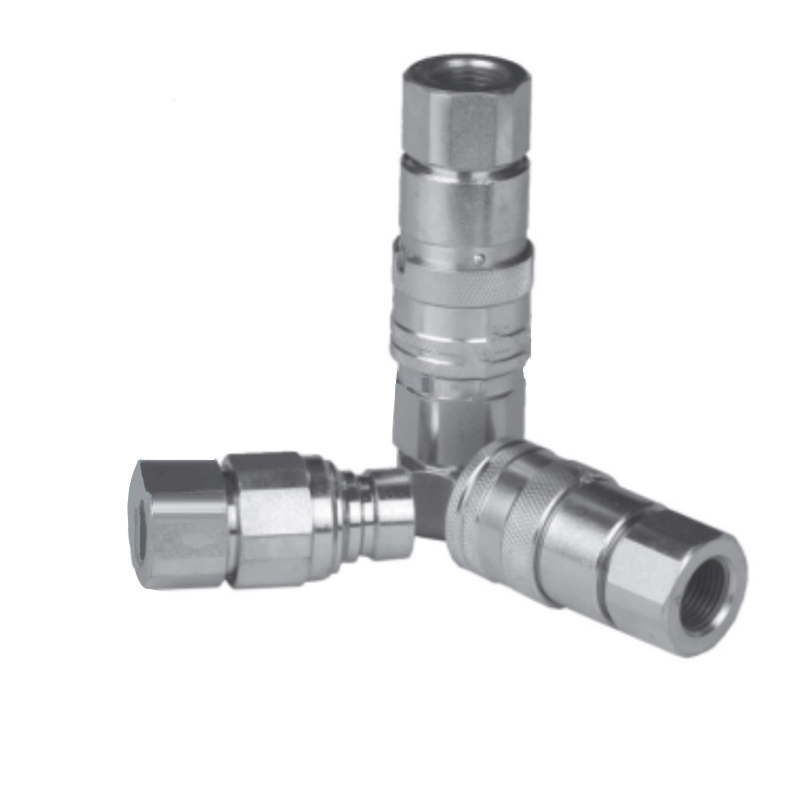What safety measures should be followed when connecting or disconnecting flat face hydraulic couplers under pressure?
Connecting or disconnecting flat face hydraulic couplers under pressure can be hazardous if not done properly. Here are some important safety measures that should be followed:
1.Wear Appropriate Personal Protective Equipment (PPE): Prioritize the safety of personnel involved by mandating the use of suitable PPE. Safety glasses protect against hydraulic fluid splatter, gloves safeguard hands from potential hazards, and protective clothing further shields against accidental exposure.
2.Relieve Pressure: Begin the procedure by effectively relieving hydraulic pressure from the system. Comply with manufacturer-recommended depressurization protocols, which may involve using bleed valves or gradually opening relief valves, ensuring the system is completely depressurized.
3.Use Safety Lockouts: Prior to any work on the hydraulic couplers, enforce strict lockout/tagout procedures. This safeguards against accidental activation of equipment, preventing potentially life-threatening situations.
4.Inspect the Couplers: Thoroughly inspect flat face hydraulic couplers for visible damage, wear, or signs of contamination before proceeding. Replace any components showing signs of compromise to maintain system integrity.
5.Clean the Couplers: Guarantee cleanliness by meticulously cleaning both the male and female ends of the couplers. Utilize lint-free cloths and, when necessary, appropriate cleaning solutions to ensure couplers are free from dirt, debris, and contaminants.
6.Align and Guide Carefully: During the coupling process, exercise extreme care in aligning and guiding the male end into the female end. Avoid applying excessive force or employing tools that may result in damage to the couplers, preserving their functionality and lifespan.
7.Engage Locking Mechanisms: Confirm that any locking mechanisms integrated into the couplers are securely engaged. This measure prevents unintended disconnection during operation, thereby averting potential hazards.
8.Inspect for Proper Connection: After coupling, visually inspect the connection to ensure it is properly seated and engaged. Any visible misalignment or signs of leakage must be addressed promptly to maintain system reliability.
9.Monitor for Leaks: Following pressurization of the hydraulic system, maintain vigilant monitoring of the couplers for any indications of leaks. Promptly investigate and rectify any instances of hydraulic fluid escaping from the connection points.
10.Use Appropriate Tools: Employ specialized tools or wrenches judiciously, if necessary, to tighten or secure the couplers. Exercise caution to prevent over-tightening, which may lead to damage to couplers or seals, compromising their performance.
11.Document Procedures: Maintain meticulous records of the procedures executed during the connection and disconnection of flat face hydraulic couplers. Ensure that personnel involved are well-versed in these documented protocols for consistency and accountability.
12.Emergency Response Plan: Develop and communicate an emergency response plan to address unexpected scenarios, such as sudden leaks or coupler failure. Educate all personnel on proper response procedures, including shutdown and containment steps.
13.Regular Maintenance: Establish a comprehensive maintenance schedule for routine inspections and servicing of flat face hydraulic couplers. Proactive maintenance helps identify wear and damage before they escalate into safety hazards.
14.Training and Certification: Validate that personnel responsible for working with hydraulic couplers have received adequate training and certification. Competency in safety protocols and procedures is crucial for safe operation.
GT- FF Series couplings employ flush valving when connecting or disco nnecting.This means that the valves are mated together so that only small amounts of fluid can be lost during disconnection or air inclusion during reconnection.













Contact Us